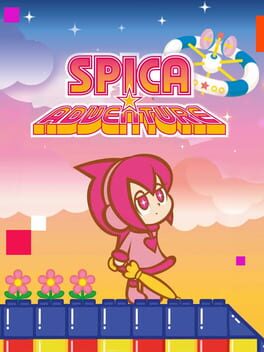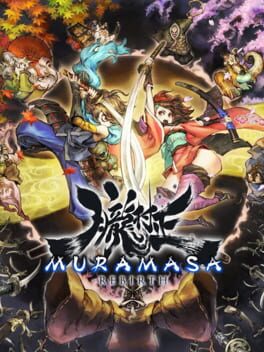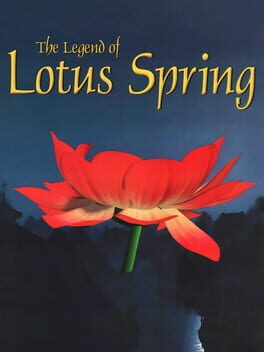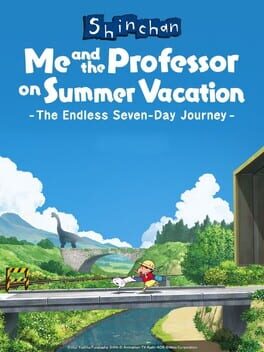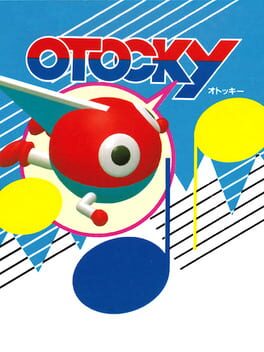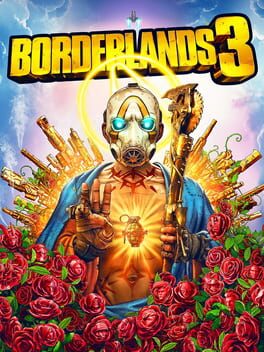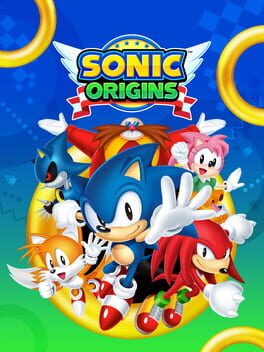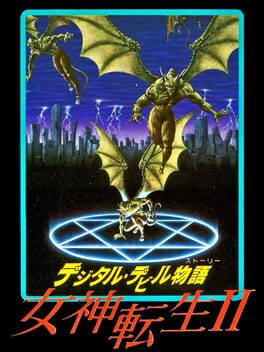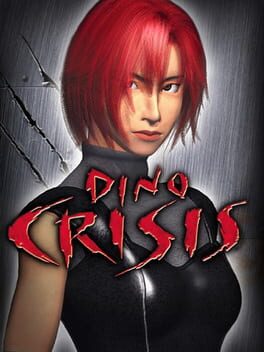Liquidrocks
40 Reviews liked by Liquidrocks
Spica Adventure
2005
Taito's last arcade platformer hurrah. It plays way too safe compared to similar output from the company, but it's still a very fun play, and one I'm glad is getting console ports finally after a decade and a half long injustice towards it. Also because its a bitch to "emulate" the arcade version.
Here's hoping the original mobile version eventually gets a port too along with it's semi-sequel...
Here's hoping the original mobile version eventually gets a port too along with it's semi-sequel...
Muramasa Rebirth
2013
Sayonara Wild Hearts
2019
what 0 pussy does to a mf
EDIT: I have found out 5 minutes after posting this review that Emperor Xianfeng had 18 consorts, so this is a historically inaccurate version of events. I apologise for this grievous error and will strive for due diligence on fact-checking for future reviews. Sorry for all who were misled, and I will leave this up for posterity.
EDIT: I have found out 5 minutes after posting this review that Emperor Xianfeng had 18 consorts, so this is a historically inaccurate version of events. I apologise for this grievous error and will strive for due diligence on fact-checking for future reviews. Sorry for all who were misled, and I will leave this up for posterity.
not gonna play again bc the gacha is evil and the only thing i care about in this world is feature film length shhis (+ luca) commus on youtube and reading a spreadsheet of whatever translations arent on video but please note: the candy in this 4koma are honey lemon candies which earlier nichika had made honey lemons as a nice snack for mikoto to in her passionate if painfully anxiously roundabout way show her love for her and mikoto has acquired a taste for them outside of her diet of water bottles and constant machine precise practice and nothing else bc she has in her quiet if frustratingly stuntedly roundabout way has already accepted the love nichika has for her. im not in pain at all i just thought this was interesting
Elements of Boku no Natsuyasumi and Shin-chan combining to make something not quite as good as either.
I'm pretty gutted about how this turned out. The peaceful vacation vibe is marred by essentially having a huge checklist that needs to be done, and that very same peaceful vacation vibe doesn't allow Shin-chan to really be himself. He feels watered down and one-note, as do most of the other characters. Everyone's so saccharine and nice. Misae doesn't lose it and give him a wee bonk on the head. Hiroshi never gets in bother by not thinking before speaking. Shin-chan doesn't get to do anything more than crap puns. Shiro's basically welded to a fucking doghouse.
It feels like such a surface level understanding of why people like Shin-chan, and maybe Boku no Natsuyasumi to the same extent. I can't speak with authority on that as Attack of the Friday Monsters is my only exposure to the series beyond gameplay clips over the years. But a big list of tasks to perform to progress a barely there story does not feel like what these games are supposed to be about.
Just a strange one, because the looping nature of your week's vacation makes it seem like things might go on forever, but then after finishing a certain mission, the game kinda completes itself. It was like I was walked through maybe eight different scenarios that all just suddenly ended missions I had gotten weeks earlier. It might as well have been cutscenes. Didn't feel like I had done anything to earn them. Just played long enough for them to end. Why am I even holding the controller?
He doesn't get his dick out once.
I'm pretty gutted about how this turned out. The peaceful vacation vibe is marred by essentially having a huge checklist that needs to be done, and that very same peaceful vacation vibe doesn't allow Shin-chan to really be himself. He feels watered down and one-note, as do most of the other characters. Everyone's so saccharine and nice. Misae doesn't lose it and give him a wee bonk on the head. Hiroshi never gets in bother by not thinking before speaking. Shin-chan doesn't get to do anything more than crap puns. Shiro's basically welded to a fucking doghouse.
It feels like such a surface level understanding of why people like Shin-chan, and maybe Boku no Natsuyasumi to the same extent. I can't speak with authority on that as Attack of the Friday Monsters is my only exposure to the series beyond gameplay clips over the years. But a big list of tasks to perform to progress a barely there story does not feel like what these games are supposed to be about.
Just a strange one, because the looping nature of your week's vacation makes it seem like things might go on forever, but then after finishing a certain mission, the game kinda completes itself. It was like I was walked through maybe eight different scenarios that all just suddenly ended missions I had gotten weeks earlier. It might as well have been cutscenes. Didn't feel like I had done anything to earn them. Just played long enough for them to end. Why am I even holding the controller?
He doesn't get his dick out once.
Otocky
1987
Borderlands 3
2019
proxima persona que me diga que un juego es mejor con amigos se come la cagada a palos de su vida
me hubiese gustado un poco si no me estaban rompiendo las bolas con la historia porque la cantidad de veces que te hacen sentarte a esperar haciendo NADA en frente de eventos de dialogo larguísimos que no dicen NADA es increíble. ni regalada vale la pena esta verga encima pesa como 100gb chupame las bolas gearbox
me hubiese gustado un poco si no me estaban rompiendo las bolas con la historia porque la cantidad de veces que te hacen sentarte a esperar haciendo NADA en frente de eventos de dialogo larguísimos que no dicen NADA es increíble. ni regalada vale la pena esta verga encima pesa como 100gb chupame las bolas gearbox
Sonic Origins
2022
"Please buy my new, definitive collection of classic Sonic games, featuring new content like mission modes, animations, wid-"
Shut the fuck up Iizuka, ain't nobody gonna drop 40 dollars for some dumbass romset.
"ソニックオリジンズを購入するか、私があなたの指を取ります!"
Anything for you, my queen. I only regret that I have but 40 dollars to lose for you, my queen.
Shut the fuck up Iizuka, ain't nobody gonna drop 40 dollars for some dumbass romset.
"ソニックオリジンズを購入するか、私があなたの指を取ります!"
Anything for you, my queen. I only regret that I have but 40 dollars to lose for you, my queen.
Recommended by Liquidrocks as part of this list.
"I DARE YE ENTER...
...THE DUNGEONS OF DAGGORATH!!!"
A wireframe wizard greets me with this phrase as I first boot up Dungeons of Daggorath. The screen is pitch-black, nothing but the sound of our intrepid hero's heart beating faster yet faster as I attempt to parse the command prompt and figure out how to even begin to start my adventure, which so far consisted of the far-off sounds of monsters assailing my eardrums whilst I bump into walls typing 'MOVE'.
Static fades in.
The UI fades out.
The wireframe wizard appears once again to taunt me with this message:
"YET ANOTHER DOES NOT RETURN"
Thus far, the adventure proves fruitless.
Dungeons of Daggorath was released in 1982 (a whopping 40 years ago as of time of writing), so if I wanted to make any headway, I was going to learn how to meet this game on its own terms. A search for clues leads me to a .pdf file of the game's instruction manual, which provided me with the much needed context for this endeavor: An ancient land besieged by the return of an evil wizard and a tome left behind by the previous valiant hero full of tips and tricks for surviving the eponymous Dungeon of Daggorath, cheekily revealing the manual itself a diegetic part of the world. More importantly though, I found the list of commands needed to get this show on the road.
PULL RIGHT TORCH
USE RIGHT
LOOK
MOVE
Vision. A rattlesnake of some kind, presumably the very same that dispatched the last 3 or so bumbling adventurers. Browsing the manual as my lumbering oaf of an adventurer has his calves nipped at provides the remedy for this situation:
USE SWORD ???
PULL SWORD ???
PULL LEFT SWORD
USE SWORD ???
ATTACK ???
ATTACK LEFT
My bumbling with the command prompt seals yet another adventurer's fate, consigned to becoming a beast's meal.
"YET ANOTHER DOES NOT RETURN"
Back on Floor 1. The sounds of beasts creep ever-closer. To lollygag has proven fatal before.
P R SW
P L T
U L
Now that the first major hurdle has been overcome and the gameplay has slowed down, I am left with naught but my own thoughts and the masterful soundscape of Dungeons of Daggorath. Instead of a traditional health bar reminiscent of the TTRPGs Daggorath is obviously inspired by, your status is represented via a heart monitor on the bottom of the screen, a constant thump-thump that speeds up and slows down according to the current strain on your body. In the dungeon, each enemy has their own unique sound, alongside dynamic volume levels in relation to your current position to let you know exactly how close they are to your current location. The static hissing of a rattlesnake. The thunderous footsteps of a golem. The clanking of a knight's armor. The tell-tale beating of your adventurer's heart filling your ears, providing tensions that would be unmatched for a decade bare minimum as you run down a hall in an attempt to lose your pursuer, the once-steady heartbeat turning into a double-kick stroke that threatens to burst from your very chest.
An attempt to escape a blob monster with a wry smirk leads to my adventurer dead on the floor from the strain put on his heart. Four Pine Torches and my Iron Sword, gone down the drain.
"YET ANOTHER DOES NOT RETURN"
P R SW
P L T
U L
Another try. I've figured out how to pace myself as to not put too much strain on the heart of this asthmatic would-be hero I'm apparently playing as. A hole in the ground that signifies progress. Floor 2, featuring a new color palette to enjoy (stark white), and a knight that turns me into a fine red mist. Another run down the drain.
"YET ANOTHER DOES NOT RETURN"
Another glance at the manual would reveal the Save function I've been desperately missing for the past 2 hours.
P R SW
P L T
U L
To survive Dungeons of Daggorath is to immerse yourself in its now arcane terms, play dirty and exploit the rules to give yourself any edge necessary. Allow a lone spider to nip at your ankles, since their attacks do fuck-all damage to your heart-rate and it keeps other monsters from occupying the same space as you, allowing hit and run tactics to be exploited to their full potential. Scatter your inventory on the floor in front of you and snuff out the lights, the dungeon itself filled with kleptomaniacs who will prioritize picking up your goods over maiming you, leaving our brave soul to beat the monsters to death with an unlit torch in the pitch-black abyss. These kind of insane game plans are not only completely viable, as even the manual makes note of these phenomena, but a breath of fresh air that makes Dungeons of Daggorath stand out even today, its minimalist design and technological limitations giving way to such insane gameplay mechanics and situations that make the experience worth having solely for the stark contrast to the decades of refinement and technological advancement we've had that would frown upon such ridiculous exploits.
Floor 4 robs you of everything in your inventory except for what you carry in your own two hands. A brutal lesson in grinding was learned here.
ZLOAD
"YET ANOTHER DOES NOT RETURN"
ZLOAD
"YET ANOTHER DOES NOT RETURN"
ZLOAD
On Floor 5 lies the cruel wizard in wait. The sun has long since set, and a sense of sunk-cost fallacy is the only thing keeping me going against a gauntlet of beasts most foul. A smorgasbord of magic rings and hours of hit and run tactics ingrained into my muscle memory serve me well in our final encounter.
In an era built upon many layers of innovation and game design advancements, it's always good to come back to the games of old to humble ourselves, to see how we've grown and witness the unique ideas that are often left behind in the nebulous name of progress, especially with games as that are as seemingly limited as Dungeons of Daggorath. Even if you don't have the determination to reach the final floor of the dungeon, I believe that simply bumbling around for an hour or two is an important experience for any enthusiast looking to see the roots of the medium, to observe what we called revolutionary in the era of the ColecoVision, to glimpse for a moment what was once cutting edge.
"BEHOLD! DESTINY AWAITS THE HAND OF A NEW WIZARD..."
"I DARE YE ENTER...
...THE DUNGEONS OF DAGGORATH!!!"
A wireframe wizard greets me with this phrase as I first boot up Dungeons of Daggorath. The screen is pitch-black, nothing but the sound of our intrepid hero's heart beating faster yet faster as I attempt to parse the command prompt and figure out how to even begin to start my adventure, which so far consisted of the far-off sounds of monsters assailing my eardrums whilst I bump into walls typing 'MOVE'.
Static fades in.
The UI fades out.
The wireframe wizard appears once again to taunt me with this message:
"YET ANOTHER DOES NOT RETURN"
Thus far, the adventure proves fruitless.
Dungeons of Daggorath was released in 1982 (a whopping 40 years ago as of time of writing), so if I wanted to make any headway, I was going to learn how to meet this game on its own terms. A search for clues leads me to a .pdf file of the game's instruction manual, which provided me with the much needed context for this endeavor: An ancient land besieged by the return of an evil wizard and a tome left behind by the previous valiant hero full of tips and tricks for surviving the eponymous Dungeon of Daggorath, cheekily revealing the manual itself a diegetic part of the world. More importantly though, I found the list of commands needed to get this show on the road.
PULL RIGHT TORCH
USE RIGHT
LOOK
MOVE
Vision. A rattlesnake of some kind, presumably the very same that dispatched the last 3 or so bumbling adventurers. Browsing the manual as my lumbering oaf of an adventurer has his calves nipped at provides the remedy for this situation:
USE SWORD ???
PULL SWORD ???
PULL LEFT SWORD
USE SWORD ???
ATTACK ???
ATTACK LEFT
My bumbling with the command prompt seals yet another adventurer's fate, consigned to becoming a beast's meal.
"YET ANOTHER DOES NOT RETURN"
Back on Floor 1. The sounds of beasts creep ever-closer. To lollygag has proven fatal before.
P R SW
P L T
U L
Now that the first major hurdle has been overcome and the gameplay has slowed down, I am left with naught but my own thoughts and the masterful soundscape of Dungeons of Daggorath. Instead of a traditional health bar reminiscent of the TTRPGs Daggorath is obviously inspired by, your status is represented via a heart monitor on the bottom of the screen, a constant thump-thump that speeds up and slows down according to the current strain on your body. In the dungeon, each enemy has their own unique sound, alongside dynamic volume levels in relation to your current position to let you know exactly how close they are to your current location. The static hissing of a rattlesnake. The thunderous footsteps of a golem. The clanking of a knight's armor. The tell-tale beating of your adventurer's heart filling your ears, providing tensions that would be unmatched for a decade bare minimum as you run down a hall in an attempt to lose your pursuer, the once-steady heartbeat turning into a double-kick stroke that threatens to burst from your very chest.
An attempt to escape a blob monster with a wry smirk leads to my adventurer dead on the floor from the strain put on his heart. Four Pine Torches and my Iron Sword, gone down the drain.
"YET ANOTHER DOES NOT RETURN"
P R SW
P L T
U L
Another try. I've figured out how to pace myself as to not put too much strain on the heart of this asthmatic would-be hero I'm apparently playing as. A hole in the ground that signifies progress. Floor 2, featuring a new color palette to enjoy (stark white), and a knight that turns me into a fine red mist. Another run down the drain.
"YET ANOTHER DOES NOT RETURN"
Another glance at the manual would reveal the Save function I've been desperately missing for the past 2 hours.
P R SW
P L T
U L
To survive Dungeons of Daggorath is to immerse yourself in its now arcane terms, play dirty and exploit the rules to give yourself any edge necessary. Allow a lone spider to nip at your ankles, since their attacks do fuck-all damage to your heart-rate and it keeps other monsters from occupying the same space as you, allowing hit and run tactics to be exploited to their full potential. Scatter your inventory on the floor in front of you and snuff out the lights, the dungeon itself filled with kleptomaniacs who will prioritize picking up your goods over maiming you, leaving our brave soul to beat the monsters to death with an unlit torch in the pitch-black abyss. These kind of insane game plans are not only completely viable, as even the manual makes note of these phenomena, but a breath of fresh air that makes Dungeons of Daggorath stand out even today, its minimalist design and technological limitations giving way to such insane gameplay mechanics and situations that make the experience worth having solely for the stark contrast to the decades of refinement and technological advancement we've had that would frown upon such ridiculous exploits.
Floor 4 robs you of everything in your inventory except for what you carry in your own two hands. A brutal lesson in grinding was learned here.
ZLOAD
"YET ANOTHER DOES NOT RETURN"
ZLOAD
"YET ANOTHER DOES NOT RETURN"
ZLOAD
On Floor 5 lies the cruel wizard in wait. The sun has long since set, and a sense of sunk-cost fallacy is the only thing keeping me going against a gauntlet of beasts most foul. A smorgasbord of magic rings and hours of hit and run tactics ingrained into my muscle memory serve me well in our final encounter.
In an era built upon many layers of innovation and game design advancements, it's always good to come back to the games of old to humble ourselves, to see how we've grown and witness the unique ideas that are often left behind in the nebulous name of progress, especially with games as that are as seemingly limited as Dungeons of Daggorath. Even if you don't have the determination to reach the final floor of the dungeon, I believe that simply bumbling around for an hour or two is an important experience for any enthusiast looking to see the roots of the medium, to observe what we called revolutionary in the era of the ColecoVision, to glimpse for a moment what was once cutting edge.
"BEHOLD! DESTINY AWAITS THE HAND OF A NEW WIZARD..."
This review contains spoilers
This review is for the original Famicom release and doesn't take into account the improvements made in its remake, Kyuuyaku Megami Tensei. Length Warning.
Digital Devil Story: Megami Tensei 2 is a phenomenal game. I don't even know where to start, tbh.
I finished Digital Devil Story: Megami Tensei 1 right before in preparation for DDSMT2 once the English translation for the NES version of the game was finally released. While DDSMT1 is generally viewed by fans pretty negatively, it fills a niche that is perfect for a masochistic boomer like me to enjoy. However, it's easy to see why so many megaten fans, even diehards, dropped or ignored the game altogether. Because of its brutality, its mechanical simplicity, its often cryptic means of progression, its grindiness, its poor combat balancing especially in the endgame…You get the idea. I wouldn't fault anyone for disliking DDSMT1 outright. It clicked for me quickly for several reasons: its ambition, its absurd but still intensely satisfying challenge rivaling (and topping, imo) that of the infamous Dragon Warrior II, its banging soundtrack, and especially its weird ass design choices. Whether it be the nonlinear entry-and-exit approach to dungeons, the boss-integrated puzzles, or its interconnected map structure which includes a literal FLYING CITY of a dungeon which after conquering you can then fly to different locations... Yeah, DDSMT1 did some shit that I still have not seen replicated to this day. 36 years later. And so, despite its shortcomings, the first game Is exactly the type of game I can get a ton of mileage and enjoyment out of. Even if those glaring issues make for a very rough package overall. I'd give it like an 8/10 probably. It's fucking great.
DDSMT2 however, is an entirely different beast. DDSMT1 was a (rough) adaptation of an 80's sci-fi novel trilogy of the same name. Therefore, DDSMT2 was the first game where the team was given free reign over the project creatively. Combine that fact with their prime position to refine and iterate on the ambitious and groundbreaking foundation set by its predecessor DDSMT1, and you get one hell of a followup; a followup that capitalizes on the potential of DDSMT1 and so much more.
DDSMT2 is, for my money, second to none as one of the most impressive and memorable entries in all of the Megami Tensei franchise. It’s well worth checking out even for those who found DDSMT1 too rough or unpalatable to truly enjoy. This is the game where MegaTen truly comes into its own, and in many ways, sets a REAL foundation for the even greater follow ups- Shin Megami Tensei and Shin Megami Tensei II.
I'd likely consider DDSMT2 the single most ambitious game in the entire NES library. It's a massive, 60+ hour journey that brings the duology to well over 100 hours long in total. It boasts a sprawling narrative with not just one, but TWO giant open worlds to explore in a pseudo-nonlinear fashion. There are multiple story paths, red herrings and misdirections starting from the very first hours of the game, callbacks, references, twists and turns, and distinct endings formed around the player’s level of engagement with the world and dialogue choices made throughout the game.
The game has a surprisingly dynamic sense of atmosphere across its two worlds- with the tone ranging from (in typical megaten fashion) bleak and gritty to fantastical and adventurous, from outright horrific to doofy and charming, and from industrial and dystopian to ethereal and demonic. While not something later entries don't also accomplish, it's worth noting that DDSMT2 was the first game to nail that huge tonal range that I'd consider one of the biggest draws of the MegaTen franchise. It’s one of the main characteristics which sets it apart from most other JRPG franchises.
Demon fusion was already a groundbreaking innovation in the original game, and the mechanic is only iterated upon further in this sequel. It has much-improved binary AND new trinary demon fusion mechanics, elemental slime infusion, and a massive cast of demons that I could easily see spanning over 200 total. During the post-credits sequence where you can see the stats and designs of every single demon, I personally counted well over 40 demons I not only didn't recruit, but didn't even SEE one time over the course of the game. It's pretty nuts to see the sheer quantity of uniquely and intricately designed demons, complete with unique (albeit limited) animation and unique skillsets which coincide with their appearances/designs, and in some instances, even mythological backgrounds.
It really should be reiterated that the amount of substanative quantity packed into DDSMT2, not even taking its already impressive design quality into account, is baffling. Despite my best efforts to explore every nook and cranny of the games’ worlds, I still missed out on encountering so many unique demons, battles, and events along the way. I understand that it may be a frustrating prospect for some players. But for me personally, it only serves to impress me more that such a fundamentally ambitious game is still bursting at the seams with content. Even beyond the main path, there is so much to see that, without a ludicrously detailed guide dictating all of your movements and decisions, you won't ever see everything it has to offer. Keep in mind this is an NES game we're talking about. Y'know, that system with limitations so stringent that developers often struggled to find ways to stretch their games into an experience with enough longevity to warrant their high price tags.
DDSMT2 also features greatly improved demon negotiation with both unique demon dialogue and unique negotiation circumstances- including six different actions for approaching each individual negotiation. After the initial demon encounter, you can mix-and-match as few or as many of these six actions as you like in order to raise affection points before initiating the recruitment of said demon. It's a system that, while not as complex or intuitive as it COULD be if iterated on in future games, was still a massive step up from DDSMT1’s system.
Also, I just gotta say, this is quite possibly my favorite approach to demon negotiation of any game in all of MegaTen. I really dig how the demons leave it up to YOU to decide how much you want to interact with them before the bargaining begins- as you have to choose WHEN to initiate that bargaining yourself. It creates an interesting risk/reward system where, if you successfully charm the demon with one extra action, you're more likely to get them to ask for fewer gifts in order to join. However, if the demon responds coldly, you cause the demon to lose affection points- making recruitment more difficult and costly, inciting them to get hostile, and even run away occasionally.
This results in an interesting tactical dynamic in the endgame especially since random encounters later on become more frequent and hit much harder. Early on in the game, demons running away during negotiation seemed like just a frustrating nuisance when you’re trying to get a very specific demon to join you. Yet in the latter half of the game, demons running away could often be a saving grace when traversing the endgame labyrinths to end encounters quickly as a means to progress WITHOUT depleting your resources. Put simply, the negotiation in DDSMT2 plays a large part in the massive leap forward in strategic depth from its predecessor. Whereas previously negotiation felt rather distinct and removed from the combat portion of the game itself, the two mechanics feel much more harmoniously integrated this time around.
The game isn't perfect by any means, though I have surprisingly little in the way of complaints. A lot of the complaints I have are more frustrations than anything else, given that I was stubborn about not using save-states within dungeons so as not to break the intended difficulty or anything like that. Multitarget instakill spells fly all over the place in the second half, which lead to some brutal moments of wiping out near the end of long ass dungeons. The dungeon layouts themselves can often lead to hair-pulling frustration since there is no fully detailed minimap (though this was addressed in the Kyuuyaku remake, thankfully). Also, the only map you DO get through the “Mappa” spell (which yes, still costs MP… smh) is still a brutally small 3x5 grid. It's also completely unmarked, meaning it's up to you to remember where stairs, warp pads, pitfalls, shops, and well, literally anything else, are located.
One other nagging issue I did find myself pretty bummed about throughout the game was the lack of item description and equipment statistics. The game provides much more variety for character equipping- you now have separate slots for a gun, a sword, a helmet, a suit of armor, leggings, boots, and two different types of accessories (again divided by male/female armor like in DDSMT1). However, at no point in the game do you get the ability to see HOW these weapons and armor actually impact your overall stats. There is the exception of certain armor providing passive stat boosts (ie to Vitality, Wisdom, Attack, etc) which show up on the stat screen as red pegs instead of blue, but that's it. The only way I found to kinda-sorta gauge the effectiveness of weapons and armor is to see how much they sell for in the shops. If they offer you more, then chances are it's more useful.
Lastly, the game CAN have moments of being fairly cryptic, but nothing as utterly insane and unfair as the Izanami mask scene from DDSMT1. If you fully take in the world and talk to all the NPCs while exploring every area thoroughly (as you should, since it's one of the game's strong suits), you're given straightforward hints and directions for pretty much every required piece of progression in the game. If you play without relying on a walkthrough, there are definitely moments where trial and error takes over for an hour or two, and you'll experience more than your fair share of wandering around the world looking for a nugget of info to get you into the next section of the game. But for the most part, the game plays pretty logically and just requires you to pay attention and think critically at certain pivotal points.
To get into some smaller miscellaneous points, DDSMT2 has a GOD TIER soundtrack. Tons more variety than its predecessor and some of my favorite tracks in the series. The synth from the main battle theme “Death Match” never once got old, and the unsettling progression over the Demon World’s overworld theme “Hallucination” gives me chills just thinking about it. I’m not sure if it beats out SMT1’s “Ruins” for my favorite MegaTen overworld theme but it’s damn close. It’s hard to believe some of these tracks were doable on the Famicom soundboard- particularly the final boss track “OMEGA” which is as long and epic as the YHVH encounter deserves- and has some absolutely crazy synthesizer melodies to boot.
The game also boasts fantastic sprite work both for the demons and the various boss backgrounds- my favorite of which was definitely the Leonard boss in Ueno. The juxtaposition between the horrific demonic entity and naked human cult members worshiping it in the background brought back memories of Berserk’s Conviction arc. There are some legendary first-time boss encounters for series staple enemies- Lucifer, Satan, and YHVH being the most obvious. But the game has dozens of aesthetically great boss fights throughout.
There are surprisingly memorable story moments in DDSMT2 for an NES game. One of which immediately comes to mind is the red-herring misdirection of the game containing an overhead-style remake of DDSMT1- which is revealed to simply be a computer game WITHIN the post-apocalypse of DDSMT2’s world. But there are plenty of moments that have this level of impact: Hideto getting his arm cut off and having to desperately escape a huge dungeon while actively bleeding out. Getting a cybernetic attachment to replace it. The demon children sidequests. The misdirection of Senda and Rosanna’s story roles. Turning Bael into a frog and it ACTUALLY having huge story ramifications later on. Discovering the Demon World by circling the Hachiko statue. Finding Izanami’s decaying body in the basement of Bael’s castle and bringing her back to life before tackling the endgame. The satisfaction of using weak, random ass demons to progress through certain endgame areas (Undine and Gnome) including finding a powerful knight frozen in a block of ice and bringing him along with you. And of course, a gorey decaying head chilling on a table telling you nonchalantly that the leader of the opposing military faction is actually Satan himself. Y’know, just normal MegaTen things.
The game has great attention to detail and NPC dialogue across the world that changes as the game progresses. A great example of this would be Senda’s girlfriend. She first appears in the shelter where the game starts proper, and at first it seems like a bit of an afterthought and/or a small detail for the sake of it. But if you return to that room where she is if Senda has a status ailment or is dead, her dialogue changes accordingly and she will freak out- something that really caught me off guard when I went and checked just for the hell of it. She even has a bit of story relevance and helps you out later on in the game. I think what got to me most of all was checking back on her at the very end of the game, as despite the fact that Senda’s twisted and tragic path already led to his death, she clings to hope that he’ll still come back to her. While this is one of the stronger examples, dialogue changes regularly in the game’s major locations as you move through the various plot points. Again, for an NES game, this level of detail in the narrative is extremely impressive.
Lastly, the game has a super hype endgame that really sells the sense of progression as you feel yourself get exponentially more powerful as the final goal quickly approaches. Getting Baal and especially a level 100 Lucifer to join your party were INCREDIBLE rewards for trekking through the brutal and deflating endgame dungeons up to Beelzebub’s lair and Lucifer’s Castle. Lucifer’s Sword was also a blast to use because of how stupidly powerful it was, getting up to 8x attacks in a row PLUS criticals felt so good to unleash hell on some of the most powerful and iconic enemies in the series.
In short, this game rips. Hard. It feels incredibly ahead of its time and the mechanical prowess it shows in combat, fusion, and negotiation set it apart from every other 8-bit JRPG I've played. The way it pushes the series forward and jumpstarts the evolution of the Megami Tensei franchise is nothing short of brilliant. Shin Megami Tensei II in particular feels VERY similar to DDSMT2 in terms of its narrative scope and world, albeit that game is much more refined and with stronger character writing and worldbuilding. But I think I've made a decent enough argument as to why this game is such a marvel for the time it was released and still fantastic to play over 30 years later. I’m not sure I’d give it the straight up 10/10 despite how much I adored this game, since I do think SMTII feels like this game but done even better for the most part. Though DDSMT2 certainly has its own appeal and strengths over the more plot-heavy SMT2. But the game does so much right that it’s a no brainer 9/10 for me. Overall, Digital Devil Story: Megami Tensei 2 is a massive step-forward from the already solid DDSMT1 by improving the formula in many ways while continuing to excel even more in others- and sets the stage for the entire rest of the massive and legendary Megami Tensei franchise to follow.
Digital Devil Story: Megami Tensei 2 is a phenomenal game. I don't even know where to start, tbh.
I finished Digital Devil Story: Megami Tensei 1 right before in preparation for DDSMT2 once the English translation for the NES version of the game was finally released. While DDSMT1 is generally viewed by fans pretty negatively, it fills a niche that is perfect for a masochistic boomer like me to enjoy. However, it's easy to see why so many megaten fans, even diehards, dropped or ignored the game altogether. Because of its brutality, its mechanical simplicity, its often cryptic means of progression, its grindiness, its poor combat balancing especially in the endgame…You get the idea. I wouldn't fault anyone for disliking DDSMT1 outright. It clicked for me quickly for several reasons: its ambition, its absurd but still intensely satisfying challenge rivaling (and topping, imo) that of the infamous Dragon Warrior II, its banging soundtrack, and especially its weird ass design choices. Whether it be the nonlinear entry-and-exit approach to dungeons, the boss-integrated puzzles, or its interconnected map structure which includes a literal FLYING CITY of a dungeon which after conquering you can then fly to different locations... Yeah, DDSMT1 did some shit that I still have not seen replicated to this day. 36 years later. And so, despite its shortcomings, the first game Is exactly the type of game I can get a ton of mileage and enjoyment out of. Even if those glaring issues make for a very rough package overall. I'd give it like an 8/10 probably. It's fucking great.
DDSMT2 however, is an entirely different beast. DDSMT1 was a (rough) adaptation of an 80's sci-fi novel trilogy of the same name. Therefore, DDSMT2 was the first game where the team was given free reign over the project creatively. Combine that fact with their prime position to refine and iterate on the ambitious and groundbreaking foundation set by its predecessor DDSMT1, and you get one hell of a followup; a followup that capitalizes on the potential of DDSMT1 and so much more.
DDSMT2 is, for my money, second to none as one of the most impressive and memorable entries in all of the Megami Tensei franchise. It’s well worth checking out even for those who found DDSMT1 too rough or unpalatable to truly enjoy. This is the game where MegaTen truly comes into its own, and in many ways, sets a REAL foundation for the even greater follow ups- Shin Megami Tensei and Shin Megami Tensei II.
I'd likely consider DDSMT2 the single most ambitious game in the entire NES library. It's a massive, 60+ hour journey that brings the duology to well over 100 hours long in total. It boasts a sprawling narrative with not just one, but TWO giant open worlds to explore in a pseudo-nonlinear fashion. There are multiple story paths, red herrings and misdirections starting from the very first hours of the game, callbacks, references, twists and turns, and distinct endings formed around the player’s level of engagement with the world and dialogue choices made throughout the game.
The game has a surprisingly dynamic sense of atmosphere across its two worlds- with the tone ranging from (in typical megaten fashion) bleak and gritty to fantastical and adventurous, from outright horrific to doofy and charming, and from industrial and dystopian to ethereal and demonic. While not something later entries don't also accomplish, it's worth noting that DDSMT2 was the first game to nail that huge tonal range that I'd consider one of the biggest draws of the MegaTen franchise. It’s one of the main characteristics which sets it apart from most other JRPG franchises.
Demon fusion was already a groundbreaking innovation in the original game, and the mechanic is only iterated upon further in this sequel. It has much-improved binary AND new trinary demon fusion mechanics, elemental slime infusion, and a massive cast of demons that I could easily see spanning over 200 total. During the post-credits sequence where you can see the stats and designs of every single demon, I personally counted well over 40 demons I not only didn't recruit, but didn't even SEE one time over the course of the game. It's pretty nuts to see the sheer quantity of uniquely and intricately designed demons, complete with unique (albeit limited) animation and unique skillsets which coincide with their appearances/designs, and in some instances, even mythological backgrounds.
It really should be reiterated that the amount of substanative quantity packed into DDSMT2, not even taking its already impressive design quality into account, is baffling. Despite my best efforts to explore every nook and cranny of the games’ worlds, I still missed out on encountering so many unique demons, battles, and events along the way. I understand that it may be a frustrating prospect for some players. But for me personally, it only serves to impress me more that such a fundamentally ambitious game is still bursting at the seams with content. Even beyond the main path, there is so much to see that, without a ludicrously detailed guide dictating all of your movements and decisions, you won't ever see everything it has to offer. Keep in mind this is an NES game we're talking about. Y'know, that system with limitations so stringent that developers often struggled to find ways to stretch their games into an experience with enough longevity to warrant their high price tags.
DDSMT2 also features greatly improved demon negotiation with both unique demon dialogue and unique negotiation circumstances- including six different actions for approaching each individual negotiation. After the initial demon encounter, you can mix-and-match as few or as many of these six actions as you like in order to raise affection points before initiating the recruitment of said demon. It's a system that, while not as complex or intuitive as it COULD be if iterated on in future games, was still a massive step up from DDSMT1’s system.
Also, I just gotta say, this is quite possibly my favorite approach to demon negotiation of any game in all of MegaTen. I really dig how the demons leave it up to YOU to decide how much you want to interact with them before the bargaining begins- as you have to choose WHEN to initiate that bargaining yourself. It creates an interesting risk/reward system where, if you successfully charm the demon with one extra action, you're more likely to get them to ask for fewer gifts in order to join. However, if the demon responds coldly, you cause the demon to lose affection points- making recruitment more difficult and costly, inciting them to get hostile, and even run away occasionally.
This results in an interesting tactical dynamic in the endgame especially since random encounters later on become more frequent and hit much harder. Early on in the game, demons running away during negotiation seemed like just a frustrating nuisance when you’re trying to get a very specific demon to join you. Yet in the latter half of the game, demons running away could often be a saving grace when traversing the endgame labyrinths to end encounters quickly as a means to progress WITHOUT depleting your resources. Put simply, the negotiation in DDSMT2 plays a large part in the massive leap forward in strategic depth from its predecessor. Whereas previously negotiation felt rather distinct and removed from the combat portion of the game itself, the two mechanics feel much more harmoniously integrated this time around.
The game isn't perfect by any means, though I have surprisingly little in the way of complaints. A lot of the complaints I have are more frustrations than anything else, given that I was stubborn about not using save-states within dungeons so as not to break the intended difficulty or anything like that. Multitarget instakill spells fly all over the place in the second half, which lead to some brutal moments of wiping out near the end of long ass dungeons. The dungeon layouts themselves can often lead to hair-pulling frustration since there is no fully detailed minimap (though this was addressed in the Kyuuyaku remake, thankfully). Also, the only map you DO get through the “Mappa” spell (which yes, still costs MP… smh) is still a brutally small 3x5 grid. It's also completely unmarked, meaning it's up to you to remember where stairs, warp pads, pitfalls, shops, and well, literally anything else, are located.
One other nagging issue I did find myself pretty bummed about throughout the game was the lack of item description and equipment statistics. The game provides much more variety for character equipping- you now have separate slots for a gun, a sword, a helmet, a suit of armor, leggings, boots, and two different types of accessories (again divided by male/female armor like in DDSMT1). However, at no point in the game do you get the ability to see HOW these weapons and armor actually impact your overall stats. There is the exception of certain armor providing passive stat boosts (ie to Vitality, Wisdom, Attack, etc) which show up on the stat screen as red pegs instead of blue, but that's it. The only way I found to kinda-sorta gauge the effectiveness of weapons and armor is to see how much they sell for in the shops. If they offer you more, then chances are it's more useful.
Lastly, the game CAN have moments of being fairly cryptic, but nothing as utterly insane and unfair as the Izanami mask scene from DDSMT1. If you fully take in the world and talk to all the NPCs while exploring every area thoroughly (as you should, since it's one of the game's strong suits), you're given straightforward hints and directions for pretty much every required piece of progression in the game. If you play without relying on a walkthrough, there are definitely moments where trial and error takes over for an hour or two, and you'll experience more than your fair share of wandering around the world looking for a nugget of info to get you into the next section of the game. But for the most part, the game plays pretty logically and just requires you to pay attention and think critically at certain pivotal points.
To get into some smaller miscellaneous points, DDSMT2 has a GOD TIER soundtrack. Tons more variety than its predecessor and some of my favorite tracks in the series. The synth from the main battle theme “Death Match” never once got old, and the unsettling progression over the Demon World’s overworld theme “Hallucination” gives me chills just thinking about it. I’m not sure if it beats out SMT1’s “Ruins” for my favorite MegaTen overworld theme but it’s damn close. It’s hard to believe some of these tracks were doable on the Famicom soundboard- particularly the final boss track “OMEGA” which is as long and epic as the YHVH encounter deserves- and has some absolutely crazy synthesizer melodies to boot.
The game also boasts fantastic sprite work both for the demons and the various boss backgrounds- my favorite of which was definitely the Leonard boss in Ueno. The juxtaposition between the horrific demonic entity and naked human cult members worshiping it in the background brought back memories of Berserk’s Conviction arc. There are some legendary first-time boss encounters for series staple enemies- Lucifer, Satan, and YHVH being the most obvious. But the game has dozens of aesthetically great boss fights throughout.
There are surprisingly memorable story moments in DDSMT2 for an NES game. One of which immediately comes to mind is the red-herring misdirection of the game containing an overhead-style remake of DDSMT1- which is revealed to simply be a computer game WITHIN the post-apocalypse of DDSMT2’s world. But there are plenty of moments that have this level of impact: Hideto getting his arm cut off and having to desperately escape a huge dungeon while actively bleeding out. Getting a cybernetic attachment to replace it. The demon children sidequests. The misdirection of Senda and Rosanna’s story roles. Turning Bael into a frog and it ACTUALLY having huge story ramifications later on. Discovering the Demon World by circling the Hachiko statue. Finding Izanami’s decaying body in the basement of Bael’s castle and bringing her back to life before tackling the endgame. The satisfaction of using weak, random ass demons to progress through certain endgame areas (Undine and Gnome) including finding a powerful knight frozen in a block of ice and bringing him along with you. And of course, a gorey decaying head chilling on a table telling you nonchalantly that the leader of the opposing military faction is actually Satan himself. Y’know, just normal MegaTen things.
The game has great attention to detail and NPC dialogue across the world that changes as the game progresses. A great example of this would be Senda’s girlfriend. She first appears in the shelter where the game starts proper, and at first it seems like a bit of an afterthought and/or a small detail for the sake of it. But if you return to that room where she is if Senda has a status ailment or is dead, her dialogue changes accordingly and she will freak out- something that really caught me off guard when I went and checked just for the hell of it. She even has a bit of story relevance and helps you out later on in the game. I think what got to me most of all was checking back on her at the very end of the game, as despite the fact that Senda’s twisted and tragic path already led to his death, she clings to hope that he’ll still come back to her. While this is one of the stronger examples, dialogue changes regularly in the game’s major locations as you move through the various plot points. Again, for an NES game, this level of detail in the narrative is extremely impressive.
Lastly, the game has a super hype endgame that really sells the sense of progression as you feel yourself get exponentially more powerful as the final goal quickly approaches. Getting Baal and especially a level 100 Lucifer to join your party were INCREDIBLE rewards for trekking through the brutal and deflating endgame dungeons up to Beelzebub’s lair and Lucifer’s Castle. Lucifer’s Sword was also a blast to use because of how stupidly powerful it was, getting up to 8x attacks in a row PLUS criticals felt so good to unleash hell on some of the most powerful and iconic enemies in the series.
In short, this game rips. Hard. It feels incredibly ahead of its time and the mechanical prowess it shows in combat, fusion, and negotiation set it apart from every other 8-bit JRPG I've played. The way it pushes the series forward and jumpstarts the evolution of the Megami Tensei franchise is nothing short of brilliant. Shin Megami Tensei II in particular feels VERY similar to DDSMT2 in terms of its narrative scope and world, albeit that game is much more refined and with stronger character writing and worldbuilding. But I think I've made a decent enough argument as to why this game is such a marvel for the time it was released and still fantastic to play over 30 years later. I’m not sure I’d give it the straight up 10/10 despite how much I adored this game, since I do think SMTII feels like this game but done even better for the most part. Though DDSMT2 certainly has its own appeal and strengths over the more plot-heavy SMT2. But the game does so much right that it’s a no brainer 9/10 for me. Overall, Digital Devil Story: Megami Tensei 2 is a massive step-forward from the already solid DDSMT1 by improving the formula in many ways while continuing to excel even more in others- and sets the stage for the entire rest of the massive and legendary Megami Tensei franchise to follow.
